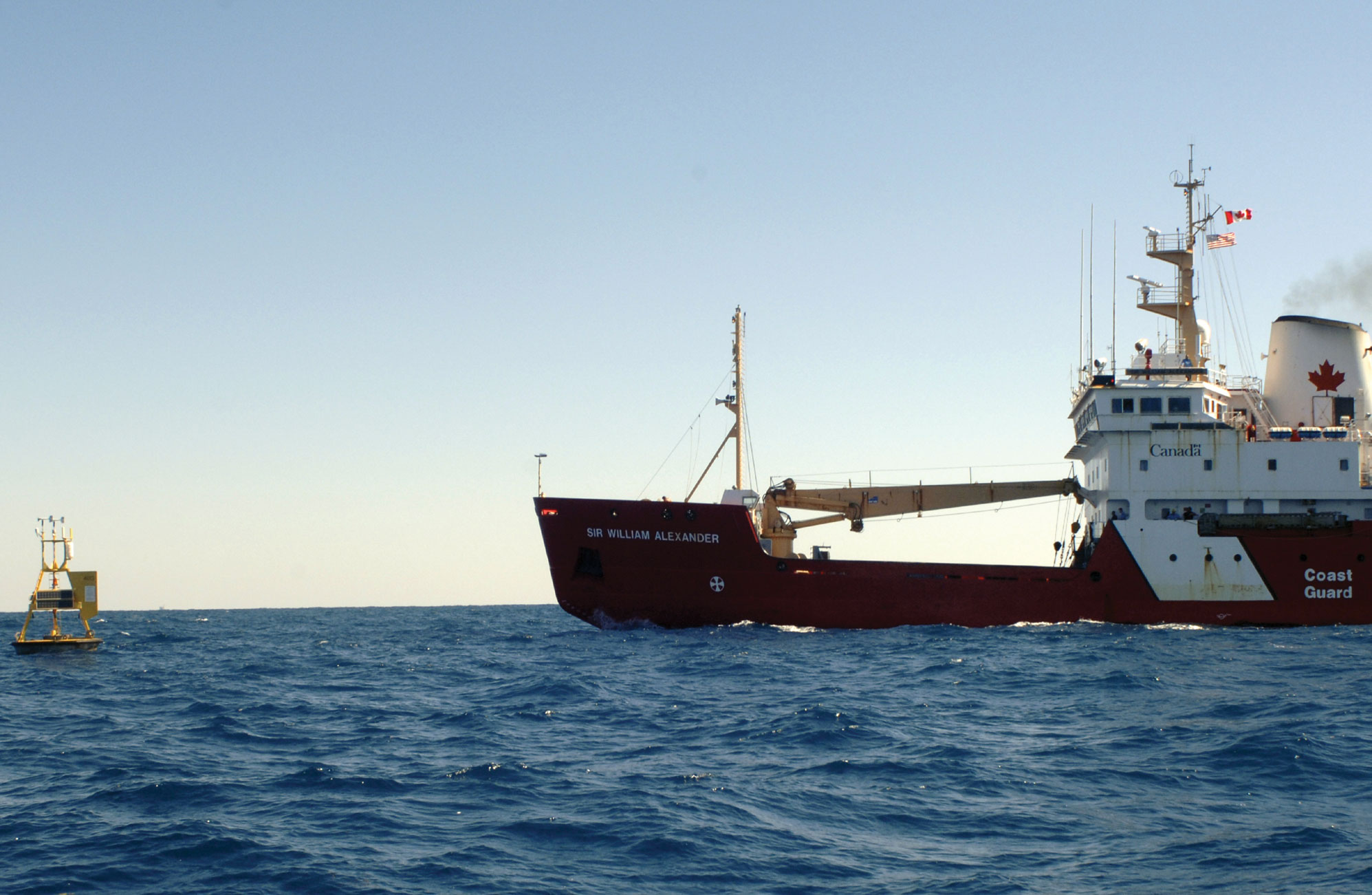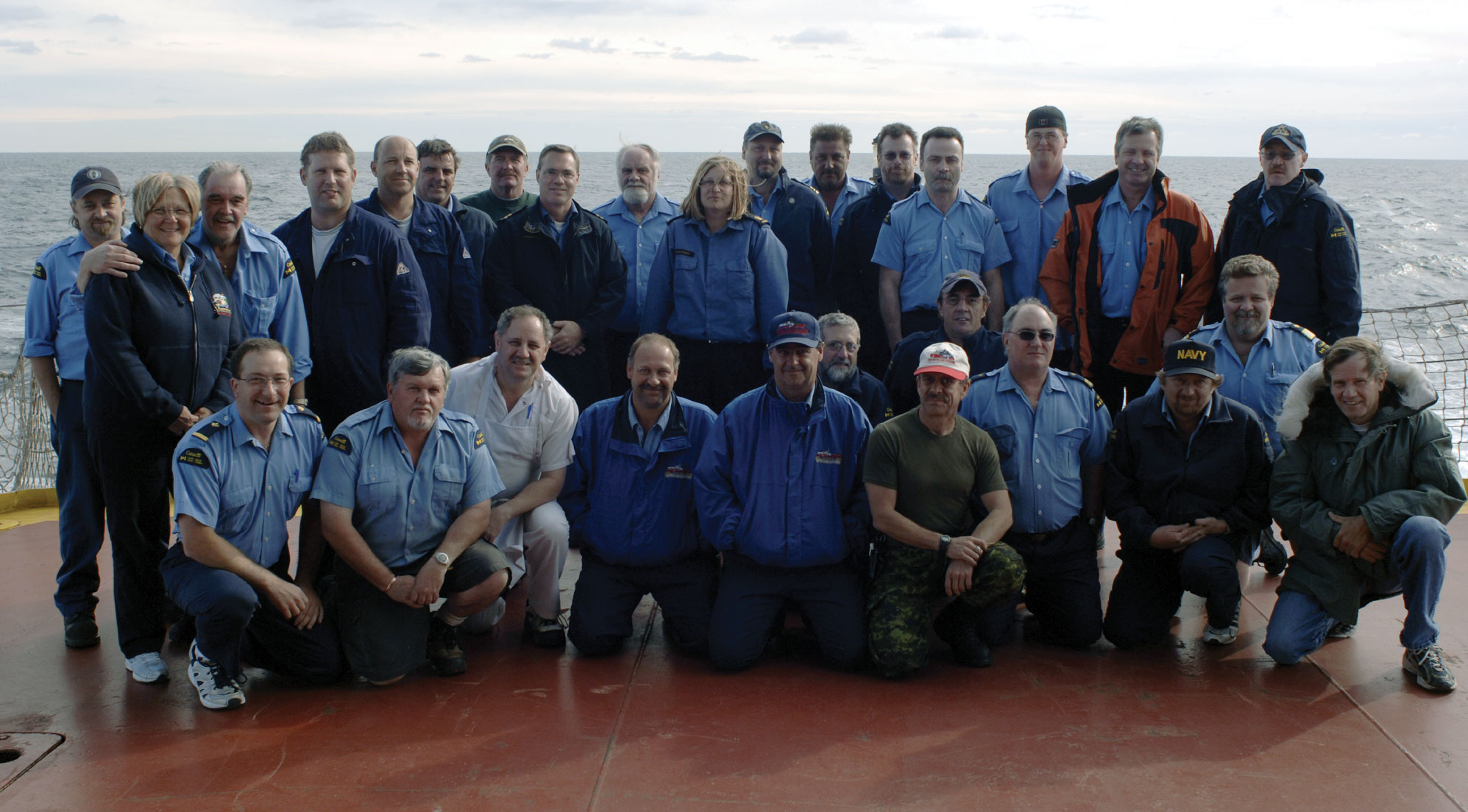
Canadian Beacon-Operation Unison
Story and photos by PA3 Christopher Evanson, U.S. Coast Guard, Atlantic AreaReprinted with permission from the Coast Guard Magazine, Katrina The Gulf Response, Special Edition 2005
An unfamiliar vessel sailed through the warm tropical waters off the coast of Key West, Fla. The hull made of double reinforced steel, red as an apple, prominently displaying a maple leaf for the world to see.
It was the Canadian coast guard ship Sir William Alexander, homeported in Halifax, Nova Scotia. The Sir Alexander is a 280-foot icebreaking buoy tender that normally spends many winters laboring in the frigid ice-covered waters of the North Atlantic.
But this trip put the ship and its civilian crew far from home, steaming down the Atlantic Coast to aid their neighbors to the south, days after a nasty storm had taken a bite out of the States.
The Sir Alexander began its long voyage on Sept. 6, to aid and assist the Coast Guard in any way possible as the Gulf Coast lay in ruins after being devastated by Hurricane Katrina. The mission was called Operation Unison.

Nor'easter
The Canadian coast guard ship Sir William Alexander, homeported in Halifax, Nova Scotia, approaches a damaged weather buoy off the North Carolina coast. Weather buoys provide early indications of potential hurricanes. The Sir Alexander assisted the U.S. Coast Guard with repairing damaged buoys in the wake of Hurricane Katrina.
Upon arriving in Pensacola, Fla., eight days later, the ship brought relief supplies to aid victims affected by Katrina and a fresh crew ready to get to work.
One week prior to the Alexander arriving in U.S. waters, and before Katrina made landfall, winds reached record speeds in the Gulf of Mexico, causing damage to oil rigs and several weather and navigation buoys vital to United States commerce.
"Weather buoys help calculate weather, such as wind speed, wave data, humidity, and barometric pressure. The navigation buoys assist in the safe transit of vessels entering ports along the Gulf Coast," said Patrick Bergen, an electronics technician with the National Oceanic Atmospheric Administration's National Data Buoy Center.
"Weather buoys are absolutely valuable to the country because they are part of the hurricane warning system," said Ward Posey, chief of aids to navigation operations for Atlantic Area.
Soon after the Sir Alexander arrived, the mission was clear. Their orders were to replace and repair damaged weather buoys, with the help of two NOAA technicians.
The Canadian coast guard crews allowed the Coast Guard to focus solely on repairing navigational aids and get some much needed rest.

Canadian Help
The crew of the Sir William Alexander, homeported in Halifax, Nova Scotia, pose for a group photo prior to their arrival back in Canada.
"The Sir Alexander allowed us to give our cutters the maintenance that they needed," said Posey. "The crews lived in much of the areas affected by the storm, and many had family matters to tend to," he said.
The presence alone for the Sir Alexander was very historic.

Weather Update
Two technicians with the National Oceanic Atmospheric Administration National Data Buoy Center in Stennis Space Center, Miss., repair a weather buoy off the North Carolina coast damaged by Hurricane Katrina. The two technicians traveled with the Canadian Coast Guard ship Sir William Alexander, a 180-foot ice breaking buoy tender homeported in Halifax, Nova Scotia.
"This was the first time the Canadian Coast Guard worked in the Gulf of Mexico," said Bryon Gibbons, Commanding Officer of the Sir Alexander. For starters, the Sir Alexander primarily is an icebreaker; it is very rare that a ship with those capabilities would be needed in a warm, humid climate.
Unlike their U.S. counterparts, the Canadian Coast Guard is made up entirely of civilians. The ship operates with a small crew that functions like a well-oiled machine.
Many Coast Guard cutters are staffed with junior officers and junior enlisted fresh out of the Academy or boot camp. But on the Sir Alexander, the 30-man crew has over 300 years of sea service combined.
"You would be hard-pressed to find anyone on this ship with less than twenty years of sea experience," said Bob Billard, a quartermaster aboard the Sir Alexander.
The day-to-day business is similar to how the Coast Guard operates. There is a commanding officer and an executive officer that the crew refers to as the chief mate. The deck department consists of six seamen and a chief boatswain who observes the daily deck work.
The engineering department consists of a chief engineer, oilers and winch men who maintain six-hour watches in the engine room. On the bridge there is always one lookout, a quartermaster, and an officer-in-charge standing watch. The Sir Alexander is also equipped with a helicopter flight deck and hangar.
After receiving the call for assistance, the Canadian coast guard serviced and repaired six weather buoys over a one-month period ranging from the Alabama coast to Honduras.
When their mission was completed in the Gulf and Caribbean, the crew made a port call to Key West, Fla., for an evening before departing on the last leg of the mission, sailing up the Atlantic coast towards Halifax. Three more weather buoys awaited the crew before going home: two off the coast of North Carolina and the last off the Maine coast.
The crew of the Sir Alexander talk very little while they work. The years of experience that each man has make it seem like they can read each other's minds. They each have purpose and poise that come from more than a quarter century of sea time.
As the crew sailed toward home, the environment became more familiar to them. The air was a little crisper, and the seawater was a little darker; Canada was close by. The crew of the Sir Alexander, well aware that they were on a historic trip, did not view the U.S. operations any differently than they would their own. One crewmember, steward Russell Mosher, said it best. "This isn't Canada helping the U.S. It's brother helping brother."
